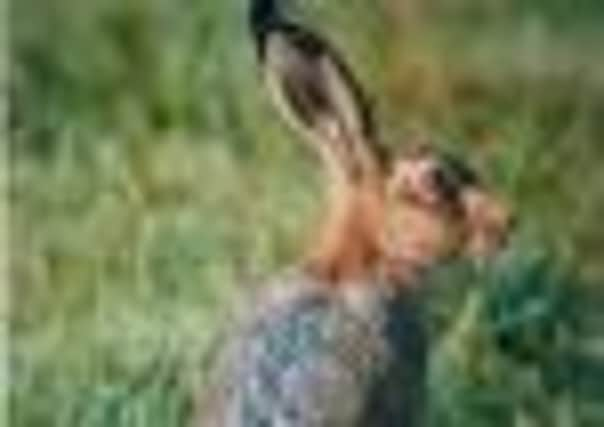I saw not one hare, but three


I always pull of the road into a field gateway and have done so for thirty years.
There is a cattle trough where the wood pigeons drink on hot summer days, the field edge flowers of heartsease and poppy, white campion and ox eyes. Years ago I always used to hear the sweet call of the peewit as the male tumbled in courtship flight over the barley fields.
Advertisement
Hide AdAdvertisement
Hide AdIf I had been there a century ago, there would have been linnets singing and twittering among the gold gorse flowers in the evening light, and as darkness came, I should have heard the strange night wailing of the stone curlew, the shepherd’s friend, as it patrolled the brakes and stoney ground of that ancient heath.
Stonechats would have made their flint-strike calls among the heather and the junipers that once were scattered across this sheep walk.
There would have been a small round shepherd’s hut behind the belt of crooked pines and a tiny yellow glow of light from oil lamp and fire. All that has gone now, yet the place still holds its resonance. For there does remain a key component of this idyllic window to the past. I can almost guarantee to see a hare.
For thirty years on climbing the hill and then driving on across the curving plateau to the distant forests, the headlights have picked out Old Turpin, Stag of the stubble, the Friendless One, The Purblind, Old Bouchart , and a hundred other names that puzzled country folk have given this animal of the wild places, which is so much more good to see about in the fields than just a mere rabbit or two.
Advertisement
Hide AdAdvertisement
Hide AdRabbits may be vermin, hares are not, unless that is, you farm in East Anglia during one of the periods of plenty. Then The Friendless One, Skulker, Swift-as-wind, becomes part of a casserole with onions and swedes. Last week on my return from Portsmouth, I was thrilled to see not just one hare but three, and all of them three week old leverets. They had benefited perhaps from the dry spring.
Numbers vary from decade to decade enormously. Forty years ago there were more than a hundred on cereal fields near Chichester I remember.
Then 140 years ago people said they had never known so few. I see them in the forests down along the wide grass rides, but to find three young on the open Downs altogether was a most heartening moment. And now we think stone curlews might be coming back to Sussex.